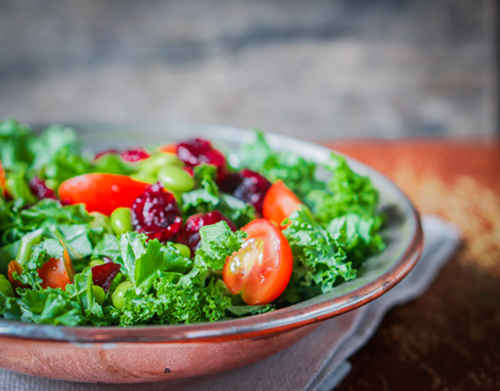Kale! The Wonder Veggie
If you’re looking for ways to help prevent or lessen the effects of: various types of cancer, arthritis, liver disease, Alzheimer’s disease, asthma and high cholesterol while also taking care of your bones, cartilage, skin and vision and improving your metabolism (whew!) you should consider adding kale to your regular diet.
Besides being high in fiber and low in fat, kale has a low calorie content and is packed with Vitamins K, A and C, as well as iron and calcium. It’s an anti-inflammatory, containing omega-3 fatty acids, and has antioxidants.
Perhaps the best news of all? Kale grows quickly, so you still have time to plant it now and enjoy a harvest before the ground freezes. We suggest trying to have your kale planted 6-8 weeks before the first frost.
When you’re planting kale, it likes soil that is well-drained and light. In other words, it likes BigYellowBag Black Garden Soil. Our soil is made up of a mix of black loam, peat loam, compost and manure. Loam is a soil type comprised of sand, silt and clay in the right ratios so that there is a perfect balance of drainage and moisture retention to ensure you will have success in growing kale. The soil is also packed with essential nutrients and organic matter to give your crop the ‘food’ it needs to grow healthy and strong.

Plant your seeds about a ¼ to ½ an inch deep, making sure that after about two weeks, you thin the seedlings so they are spaced about a foot apart. You need to water your kale regularly, but don’t overdo it.
You can start enjoying your harvest when the leaves are about the size of your hand. Smaller, tender leaves can be enjoyed raw, in salads or on sandwiches. The larger leaves can be cooked like spinach. We recommend you remove the ribs first, though.
Different varieties of kale have different flavours, from sweet to more bitter, so be sure to think about how you’re going to be using your kale before you start planting. Do you want it straight up in a salad, mixed in a smoothie, or sautéed with other veggies? A little planning can ensure you get the full benefit of this super veggie.

When you are picking kale, just remember to leave the bud found at the top centre of the plant alone, and it will stay productive longer. Also, if you mulch heavily after the first hard freeze, your kale plants may keep on producing through the winter.
If you find you have a bumper crop of kale, then be sure to freeze some for later use. It can easily be added to soups and stews, as well as smoothies, after it’s been frozen. Keep in mind that kale’s texture changes after it’s frozen.
Have fun and be adventurous!

